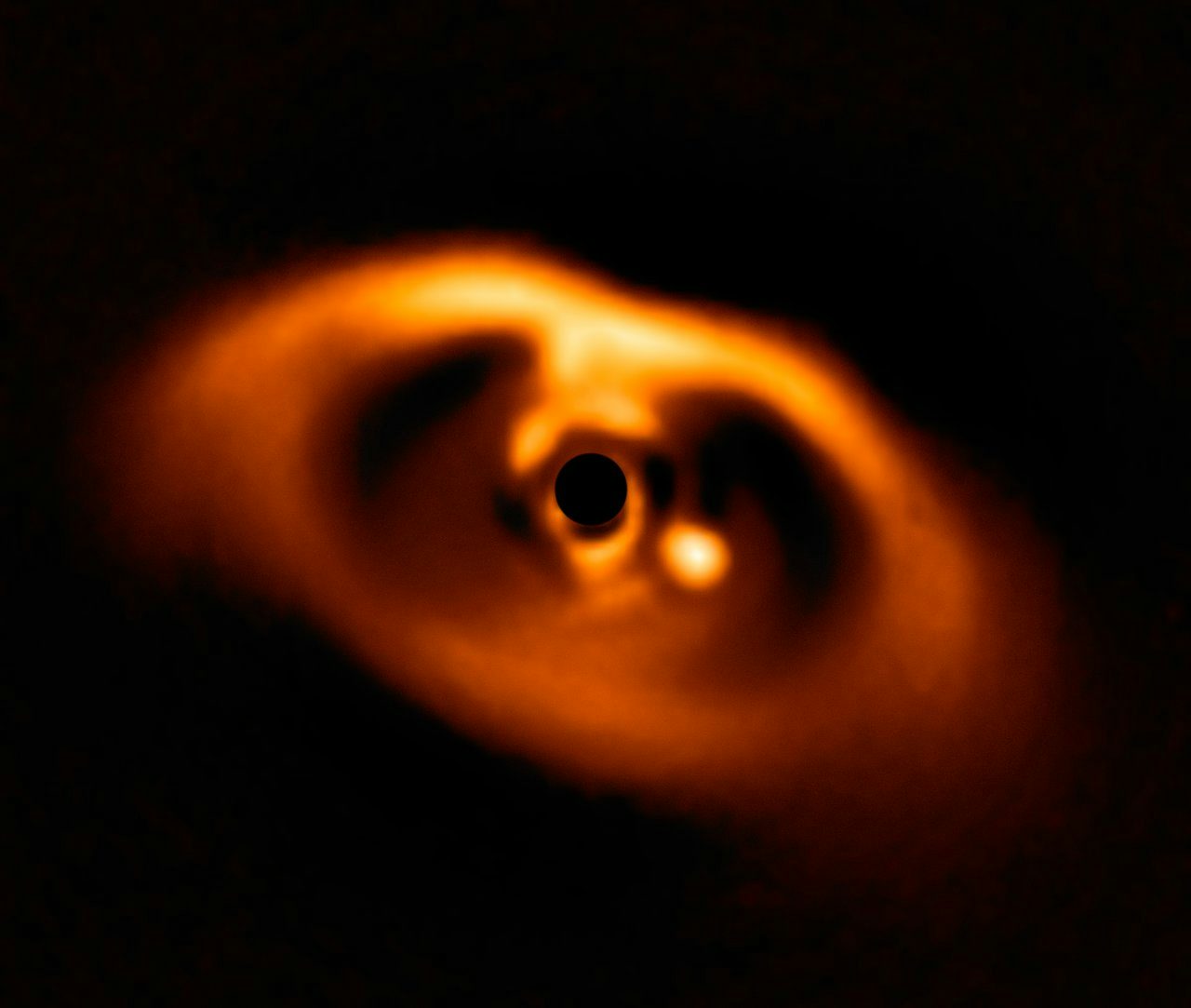This is the very first confirmed image capturing the first moment of a planet’s existence—shown condensing from a chaotic sea of gold and crimson dust 370 million light years away.
The planet, “PDS 70b” is a humongous body of gas, with several times more mass than Jupiter, in a lonely rotation 3 billion miles from the star it rotates. But PDS 70b is far from an icy space outpost: its surface temperature is a scorching 1832 degrees Fahrenheit.
This image isn’t just extraordinary because it’s beautiful: it also captures crucial data about how the elements of the universe come together to create massive structures.
On earth, we understand that basic factors like mutations, natural selection, and major events (like an asteroid strike, or the introduction of human beings) have a major effect on how diverse or not diverse life is in a particular area. Like life on earth, the planets orbiting other stars throughout the universe are incredibly diverse. However, always we’ve had a hard time understanding exactly why exoplanets are so diverse. That’s because in order to understand how planets form, astronomers needed to capture this one crucial, sensitive, rare moment in time: the actual birth of a planet.
“We have never seen a convincing case of a planet around a young star to guide our understanding of planet formation,” Thomas Henning, a lead author of the connected paper about PDS 70b, told The Outline in an email.
Astronomers have a long history of data and images about stars, galaxies, and dust clouds. However, on the scale of the universe, these are “old” celestial bodies. A forming planet, in comparison, is little more than an infant. Or, as Henning told The Outline, astronomy before this study “[was] like seeing a great population of diverse old people and having to conclude how their life was at young ages.” This means that in order to truly understand how planet form, they need specific data on the planets themselves.
Getting this data is not easy: it requires using the ground-based “VLT” (short for “Very Large Telescope”) perched on a mountaintop in Chile and using “SPHERE,” a specialized planet-finding instrument, which has been used for three years. However, only now has the timing been perfect enough to capture this image of gas giant PDS 70b.
“For me this discovery is an absolute highlight of my research career,” Henning said. “We hope that there is more to come, and the planet will certainly be the target for many more studies.”
